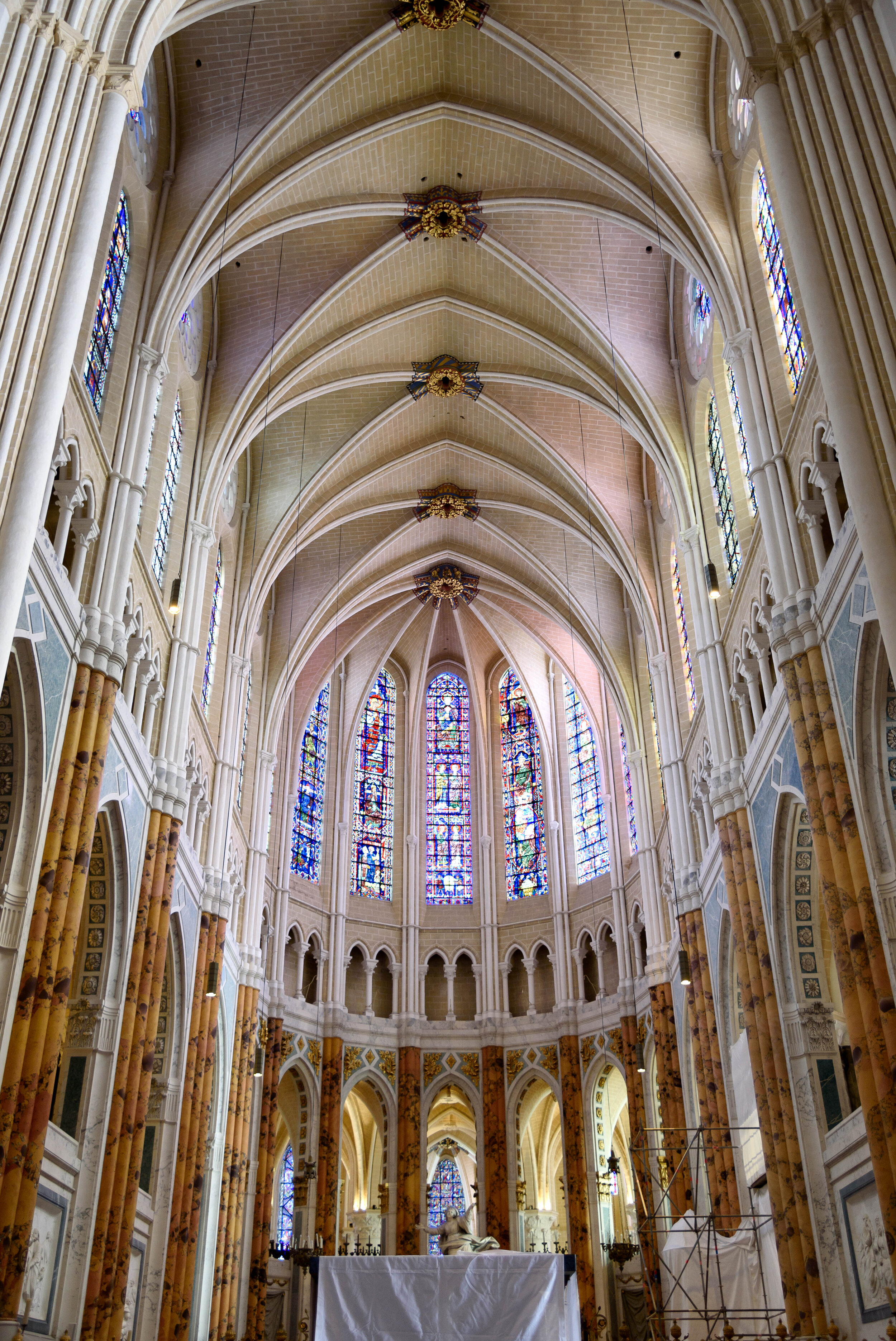
HIDDEN TREASURE - Part 2
by Paul Jernberg
In my last article, we began to explore the nature of the “musical tradition of the universal Church”, in its theological, historical, and geographical dimensions. Today I'd like to invite us all to reflect on why the Second Vatican Council proclaimed this tradition – which is in fact a collection of many diverse traditions - to be “a treasure of inestimable value.”
Perhaps the most obvious reason for this statement, one that can be seen and affirmed by believers and non-believers alike, is the fact that this tradition is a tremendous cultural patrimony which has been bestowed upon us by the epic labors of love of our forbears. When one perceives the immense and beautiful repertoire of sacred chant and polyphony from our Roman Rite, and hears it sung (particularly live and in person) with the skill and spiritual depth which are inherent to its nature, one is naturally moved to profound admiration. This is not unlike the awe and wonder we might feel when discovering other prodigies of art and nature – such as stumbling for the first time upon the ancient pyramids of Giza, or the Grand Canyon.
Such awe is further deepened and broadened as we begin to discover the worlds of the Eastern Catholic and Orthodox Churches, and their own magnificent heritages of sacred chant and polyphony which have been zealously preserved and developed over the past two millennia. All of these Christian sacred music traditions, from both East and West, are important contributors to that “musical tradition of the universal Church” which we are considering. Is it not fitting and just, simply from the perspective of our common humanity, to cherish and preserve such a glorious heritage?
However, the Constitution on the Sacred Liturgy seems to assume and go beyond such an obvious and fundamental insight in presenting another: “The main reason for this pre-eminence [i.e., being a treasure 'greater than any other art'] is that, as sacred song united to the words, it forms a necessary or integral part of the solemn Liturgy.” Such words seem to imply that there is something about the “solemn Liturgy” - a great secret, as it were – that goes far beyond the most magnificent glories of art and nature. What could such a secret be? Let's pray that we have the “eyes to see” and the “ears to hear” the truth in this regard, rather than allowing our spiritual senses to be dulled by the increasingly materialistic culture which has so permeated our world today.
Is this great “secret” not the very Presence of Christ and his loving Sacrifice in the Eucharistic Liturgy, and the lived reality of being intimately united to God in love through Him? Such an ongoing encounter with God in the Eucharist goes immeasurably beyond our enjoyment and admiration of the greatest works of nature and art. For here, in a substantial way, we transcend all other wonderful gifts to be united in love and friendship to the ineffably good Giver. This is not to say that we will always “feel” this reality; we might indeed go through varying periods of obscurity and dryness in which God seems painfully distant from us. And if we happen to attend Masses in which essential dispositions such as faith, reverence, humility, and fervent love seem to be missing in their celebration, how can these incongruities not lead many people to confusion and/or unbelief? Nevertheless, there is a veritable “cloud of witnesses” which comes to our aid as we seek the truth of the Eucharist, strengthening our faith through times of light and darkness.
Now if our sacred music traditions are of inestimable value because they form an “integral part of the solemn Liturgy”, what specific gifts do they in fact bring to this Liturgy, which are so essential (not to its validity but) to the fullness of its expression? Here are three of these gifts which are present when our sacred music traditions are truly “themselves”, i.e., when their form is clearly sacred, and when they are sung with skill and spiritual depth:
They reveal the transcendent dignity of the Mass, in a way that can resonate in the hearts and minds of those present, helping them to approach the worship of God with fitting dispositions.
They attract and support those in attendance in(to) the “contemplative dimension” of the Liturgy: to be present and receptive to the One who is present to us, with the fruits of reverent adoration, transformation, and loving communion.
They unite the hearts of those present in this shared experience of the grace of God.
It can be seen from the above that the value of our sacred music traditions is not simply in maintaining their correct forms (such as Gregorian chant and classic polyphony in the Roman Rite,) however much these holy forms are an indispensable foundation to be cherished and diligently preserved by church musicians. But the latter must also go beyond the aspect of proper musical forms, to discover how these forms can and must be sung so as fulfill the above-mentioned roles as a faithful servant of the Liturgy. This requires humility, wisdom, and diligent musicianship, animated by a deeply prayerful approach which constantly seeks the inspiration and guidance of the Holy Spirit. And such virtues also imply the dimension of development and growth, at least in certain key moments in the life of the Church, so that the “ordinary” people of good will in a given culture can fruitfully receive the non-verbal messages of our sacred music in a holy way. Gregorian chant was itself once such an inspired innovation, as the more ancient Hebrew and Greek chants were adapted to the language and culture of the Latin West. The great sacred polyphony of the 15th - 17th centuries was an inspired response to the cultural developments of the late Middle Ages and Renaissance. And in our own day, the Church has called upon composers and church musicians to cultivate new holy growth:
“Musicians will enter on this new work [the composition of music for the vernacular celebration of the Liturgy] with the desire to continue that tradition which has furnished the Church, in her divine worship, with a truly abundant heritage. Let them examine the works of the past, their types and characteristics, but let them also pay careful attention to the new laws and requirements of the liturgy, so that 'new forms may in some way grow organically from forms that already exist,' and the new work will form a new part in the musical heritage of the Church, not unworthy of its past.”
And so the gift of our sacred music tradition is a historical reality, whose inestimable value is found in its amazing capacity to bring people closer to God in the context of the Eucharistic Liturgy. But this treasure is not yet complete, as composers and church musicians are called to be faithful participants not only in its preservation but also in its inspired development.
In my next and final installment, we will explore this urgent call to faithful stewardship more deeply, in considering its challenges as well as our resources for meeting these challenges with confidence and grace.
Paul Jernberg
September 23, 2021
St. Pius of Pietrelcina
i Constitution on the Sacred Liturgy, Sacrosanctum Concilium, no.112
ii Ibid., no. 23
iii. Post-Conciliar Instruction on Sacred Music, Musicam Sacram, no.59
